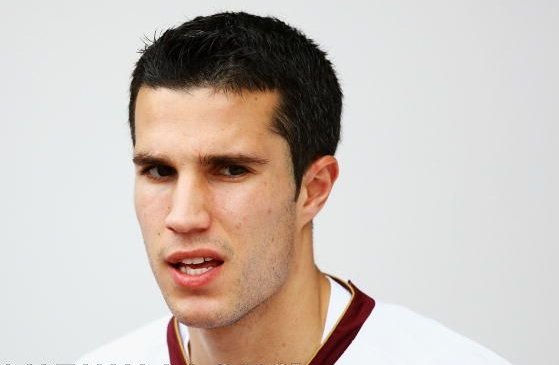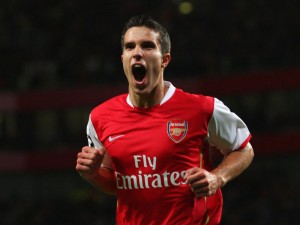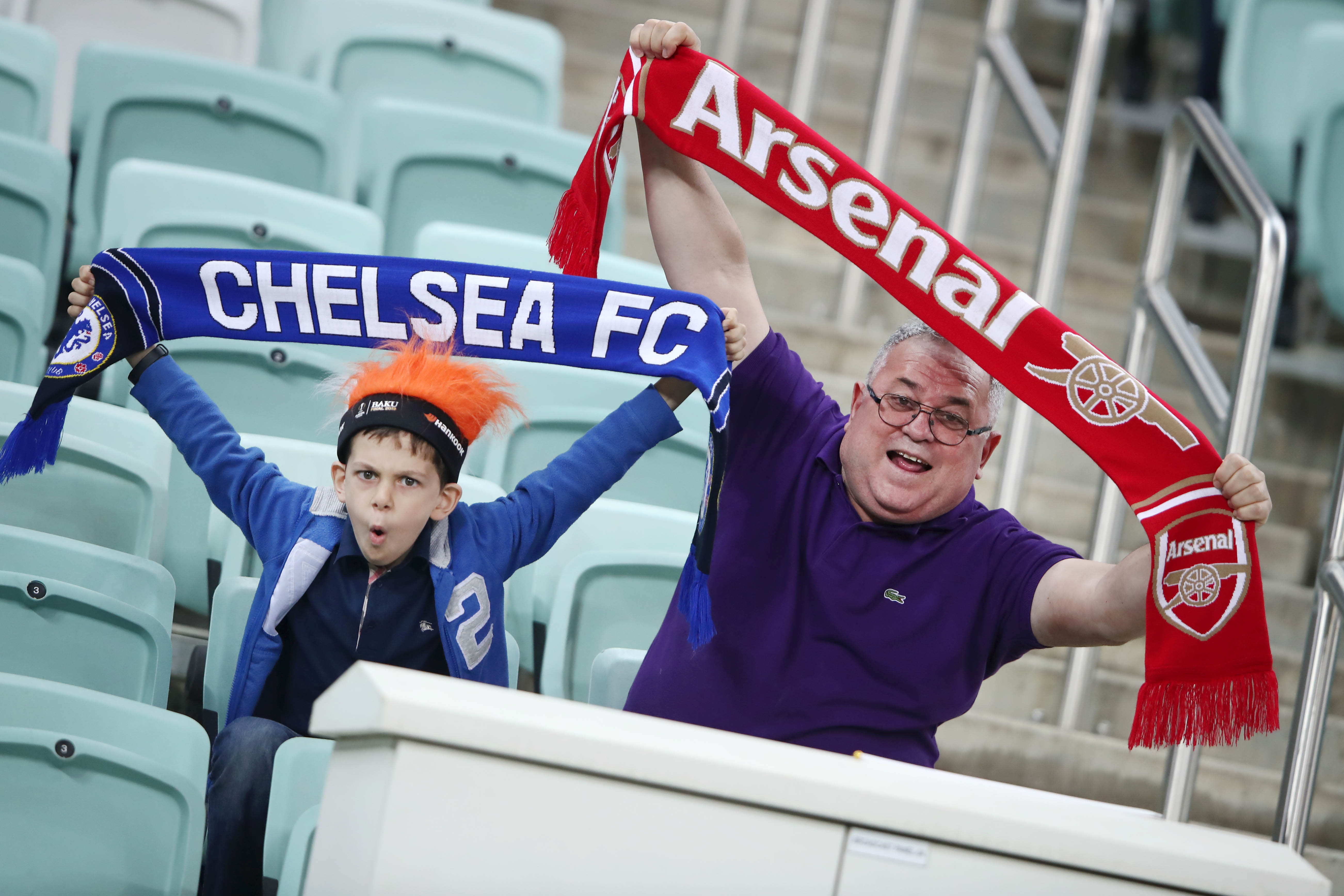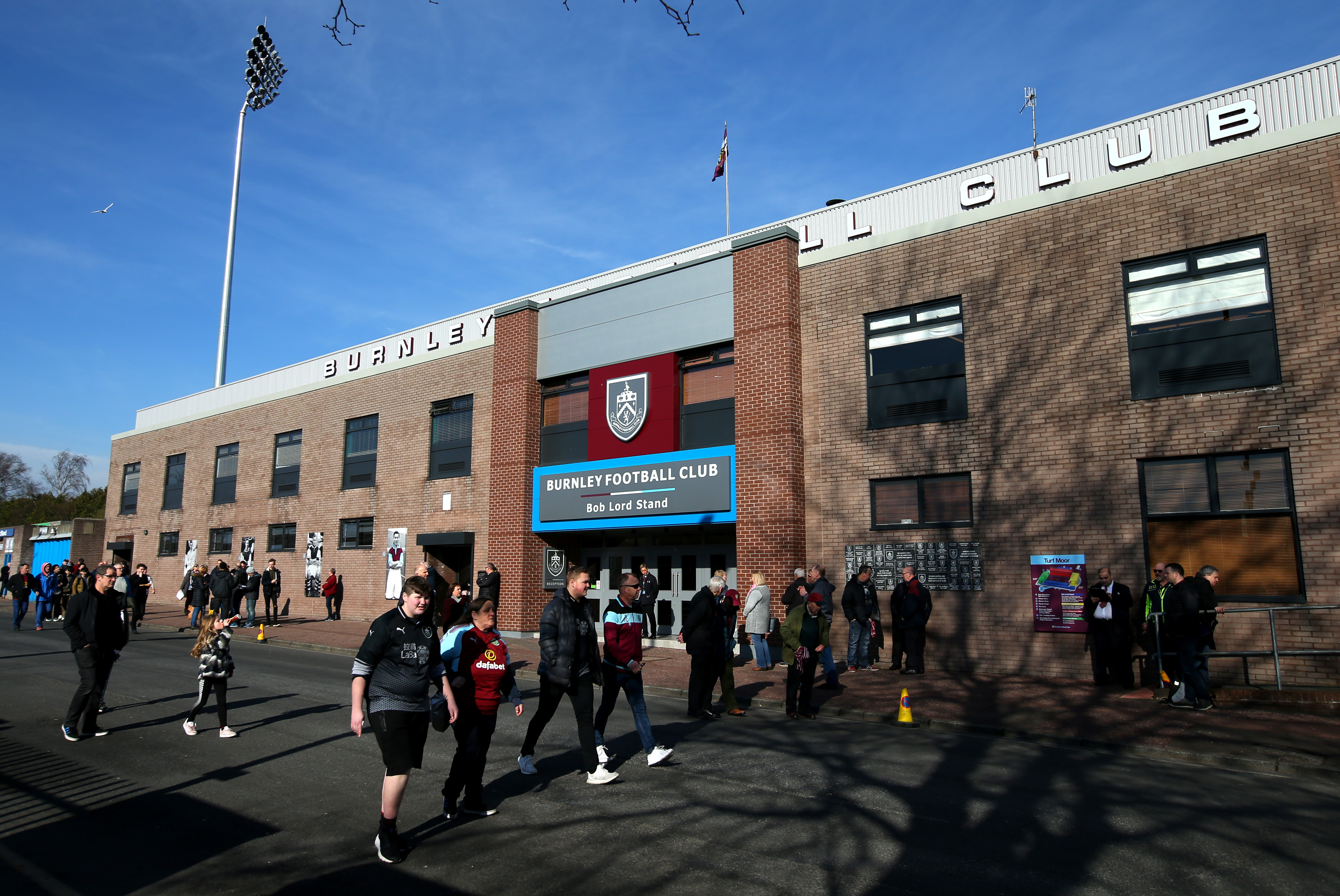Manchester United were leading 1-0 at the Emirates in the 2006/07 season, and had successfully withheld the late Arsenal onslaught, as the home side threw everything they had at the visitors. On came van Persie in the 67th minute, and in the 83rd minute he sent a peach of a volley from a Rosicky cross past a hapless Van Der Sar, and Thierry Henry completed a memorable win over the arch-rivals in stoppage time. However, amidst all the celebrations in the home camp, van Persie had once again injured himself in the match, that too while celebrating his goal. It is this particular moment which precisely sums up the man from Rotterdam , Robin Van Persie – a player capable of turning the game on his own, a player blessed with one of the best left foots in the planet, and yet a player whose path towards greatness has been greatly hampered by ill-timed injuries.
The Feyenoord Talent Arrives
Van Persie, a youth product of Feyenoord, was signed by Arsene in the 2004/05 season for his creative attacking abilities. Wenger stated his reason on signing the Dutchman:
“He can play on the left side of midfield, as a creative player behind the main strikers or as a target man.”
It was evident that the manager had intended on grooming him in the Henry mould, starting him on the left wing and gradually converting him into a center forward. However, there were question marks over his temperament and mentality, which was on display in his first Arsenal season; he was sent off in the game against Southampton for an unnecessary tackle on Graeme Le Saux, an incident which earned the ire of Wenger, who subsequently benched him for a number of games. He returned to first team action in the FA Cup semi-final against Blackburn, filling in for an injured Henry; the game saw him score a brace to take Arsenal to the final, where they eventually prevailed over Manchester United.
In the next season, he netted eight goals in eight starts, earning the Player of the Month in November 2005. However, he suffered an unfortunate toe injury in an FA Cup match against Cardiff, which cut short his momentum in the season. This was the beginning of a trend which is now familiar to everyone associated with Arsenal – an injury plagued season for the Dutchman. In nearly all subsequent season , the striker has enjoyed a successful start to the League campaign before invariably succumbing to one injury or the other – a broken 5th metatarsal in the Manchester United game in 2006/07, a knee injury on international duty followed by recurrent niggles in 2007/08, an ankle injury in a friendly against Italy which ruled him out for five months in 2009/10 and an ankle injury which put him on the side lines for two months in the current season; he had a reasonably long run in the 2008/09 campaign, inspiring a win over Chelsea at Stamford Bridge and winning the January Player of the Month in 2009 for contributing to every Arsenal goal in that month, either by scoring or assisting.
The Van Persie Show
Although his talent was never in doubt, the Dutchman did not feature regularly in his first two seasons, with the likes of Henry and Reyes gaining preference over him. However, the departure of Henry to Barcelona in 2007 gave him a chance to lead Arsenal’s forward line, and he justified his stature as a multi-dimensional creative attacking player; eight goals in eight starts speak volumes about his effectiveness in the striker role.
The natural successor to compatriot Dennis Bergkamp?
The biggest strengths that van Persie possesses are his ability to excel in multiple positions in the field, his ability to strike the ball hard with either foot, and his commitment on the field. In his absence, very few goals come from set pieces, especially free kicks and corner kicks; although Fabregas and Arshavin (and Nasri to some extent) are good at dead-ball situations, they can never come close to reproducing the pinpoint accuracy of his flighted corner balls and the combination of force and movement which van Persie takes free kicks.
However, more than these set piece skills, what Arsenal has benefitted most from having him on the field is his willingness to shoot from anywhere and his uncanny knack of having a number of shots on goal even when the goal is not in his sights; his goal against Fulham last season and the second goal of his hat-trick against Wigan recently are examples of his shooting finesse. He has also notched up some memorable goals – the equalizer against Manchester United, the goal of the month volley against Charlton Athletic (which Wenger referred to as ‘once in a lifetime’ goal), his brace in Arsenal’s rout over Spurs and his brace against Chelsea. His performances in the 3-0 derby win in 2009/10 elicited the following remark from Wenger:
“He is a mixture[of Henry and Bergkamp]. He is less of a runner than Thierry Henry and he is not completely Dennis Bergkamp because he plays higher up the pitch.
He is the kind of player, with the type of game we play, who is vital because when you play the ball to his feet his first touch is always perfect and that allows others to join in. It makes everybody dangerous. In the box he is clever and intelligent.“
In addition to scoring goals, he has probably hit the goalpost more times than another other player. Never a season has elapsed without the Dutchman rattling the woodwork, and he has repeated this feat atleast five to six times this season too, including a header in the midweek Ipswich game!
The ‘Flawed’ Genius
The Dutchman has faced criticism over his attitude during his initial years at the London club, having been labeled ‘arrogant’, ‘hot-headed’ and other similar adjectives by fans and pundits; his needless red card in the Southampton match provoked Wenger to utter profanities at him and cost Arsenal two points, and his head butt on Sorensen out of frustration gave critics a chance to point out his ostensibly mental frailty.
However, Van Persie has now seemingly managed to address his suspect temperament, having preferred to let his goals and assists do the talking; his spirited attitude on the field has put him in the league of players who can inspire their teammates to emulate their performances in the game. It is also a testimony to Wenger’s ability to nurture his players, as van Persie had arrived from Feyenoord with a blot on his disciplinary record, having demoted to the bench and featuring in the reserves for his old club, a consequence of difference of opinions with the erstwhile coach Bert Van Marwijk. The marked contrast in van Persie’s body language and confidence from his Dutch days has pleased Arsenal fans and Wenger himself.
Despite being in the Arsenal setup since 2004, van Persie has yet to achieve the tag of being an Arsenal great; the biggest culprit has been his rather well-documented injury record, which has put him in a rather unfortunate position as far as greatness is concerned. Arsenal’s failure to win a trophy in the last few seasons has invariably coincided with the unavailability of the Dutchman during the crucial fixtures in the second half of the campaign, wherein Arsenal have slipped down from a position of advantage. Arsenal fans often ask themselves the same question: “What if Robin had been fit and not injury prone? We would surely have a trophy in our kitty, right?” Although these are rhetorical questions, it would not be wrong to claim that a fully fit van Persie could single-handedly bring the Gunners within reach of a trophy, much like Ronaldo and Rooney did for Manchester United in the last two seasons. Gooners can only hope that the talismanic striker has got over his injury problems once and for all, and this season run-in will be his sought-after moment of reckoning.
Performance at International Level
For all the talent bubbling in him, van Persie has been unable to replicate his Arsenal form in Oranje colors, despite being a regular starter for the squad. Although he had played the lone striker for Arsenal, that too with moderate success, he was unable to contribute much for the Dutch national team in the same role. Before detractors point their accusing fingers at the Dutchman’s supposedly lack of commitment to his country and question Van Marwijk’s decisions to field him ahead of Huntelaar, they need to open their eyes to certain factors that could clarify where he stands in the current scheme of things. Firstly, he is no exceptional player like Zidane to be immensely successful at both club and national level, but he is capable of winning games for the side if he receives some assistance from his Oranje teammates, something which was lacking in the World Cup.
![van persie_robben [c]commons.wikimedia.org](http://www.thehardtackle.com/wp-content/uploads/2011/01/van-persie_robben-ccommons.wikimedia.org_-300x199.jpg) A different player in Oranje colours?
A different player in Oranje colours?
Secondly, most successful teams have achieved results through successful partnerships. Barcelona and Spain have Xavi and Iniesta, Manchester United had Ronaldo, Rooney and Tevez two seasons back, Chelsea have Drogba and Lampard, and Inter had Sneijder, Eto’o and Milito last season; in Arsenal’s case, van Persie and Cesc Fabregas together make a potent pair, their telepathic understanding having resulted in many goals for the Gunners in the last three campaigns. Cesc’s unmatchable visionary passes needs a forward who can convert most of the chances that the Spaniard provides, and van Persie possesses the intelligence and positioning sense to accomplish this; the likes of Bendtner, Adebayor and Chamakh have not managed to do justice to the Arsenal captain’s efforts, which is why the Dutch-Spaniard duo is the key to Arsenal’s success in the crucial fixtures.
When it comes to Netherlands, Wesley Sneijder can do what Cesc can, but the midfielder shares an animosity with van Persie, which doesn’t bode well for the Dutch team. Van Marwijk does not have the same qualities as Wenger or Ferguson when it comes to putting the players right in where they belong to, and the ever present football politics in the Dutch camp has fostered a sense of disharmony among certain players. Holland’s runs in the final were largely due to Sneijder’s vital contributions, and Van Persie received negligible assistance from the midfield, which forced him to drop back to midfield to try and get the ball, thereby negating Van Marwijk’s logic of playing him as long striker. In order for the Dutch striker to recapture his club form at national level, there are two options: improve communications in the Dutch ranks, the onus of which lies on the manager, and Van Persie can make valuable contributions with help from Sneijder, or play him in the left wing or behind the striker, where his versatility can be used to full effect. Van Persie is one of Holland’s most promising players, and they need someone who can bring out the best in him.
What Now for RVP?
After yet another injury lay-off this season, Van the Man returned to Premier League with a bang, having notched up seven goals and an assist in his last seven games, which included a hat-trick against Wigan. Arsenal have achieved convincing results with the quartet of Van Persie, Nasri, Walcott and Fabregas in the starting line-up; as long as these players are available, Arsenal have a strong chance to compete on all four fronts. Out of these players, Gooners will be hoping that the Dutchman does not get jinxed at this juncture and miss out in the crucial games , otherwise it would be a case of déjà vu for them. As for the man himself, if he manages to stay fit through the rest of the campaign, it will be a huge fillip for him and a good opportunity to make a name for himself as one of the most feared strikers in Europe. Only time will tell if the ‘man with the chocolate leg’ will last the course and repay the faith and belief shown in him by Wenger and the entire Arsenal fraternity.


![van-persie[c]bigfourza.wordpress.com](http://www.thehardtackle.com/wp-content/uploads/2011/01/van-persiecbigfourza.wordpress.com_-260x300.jpg)




